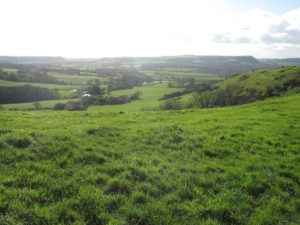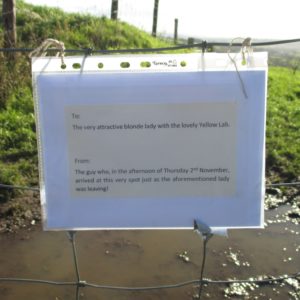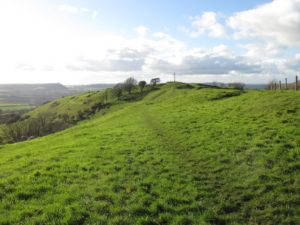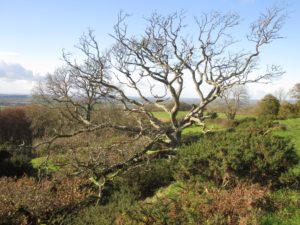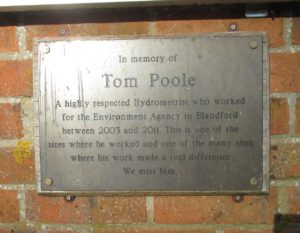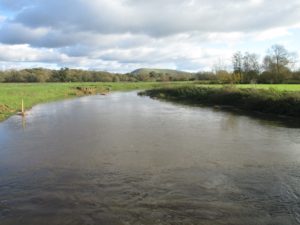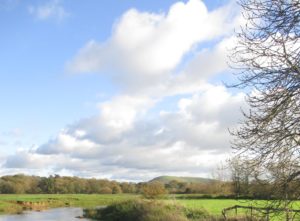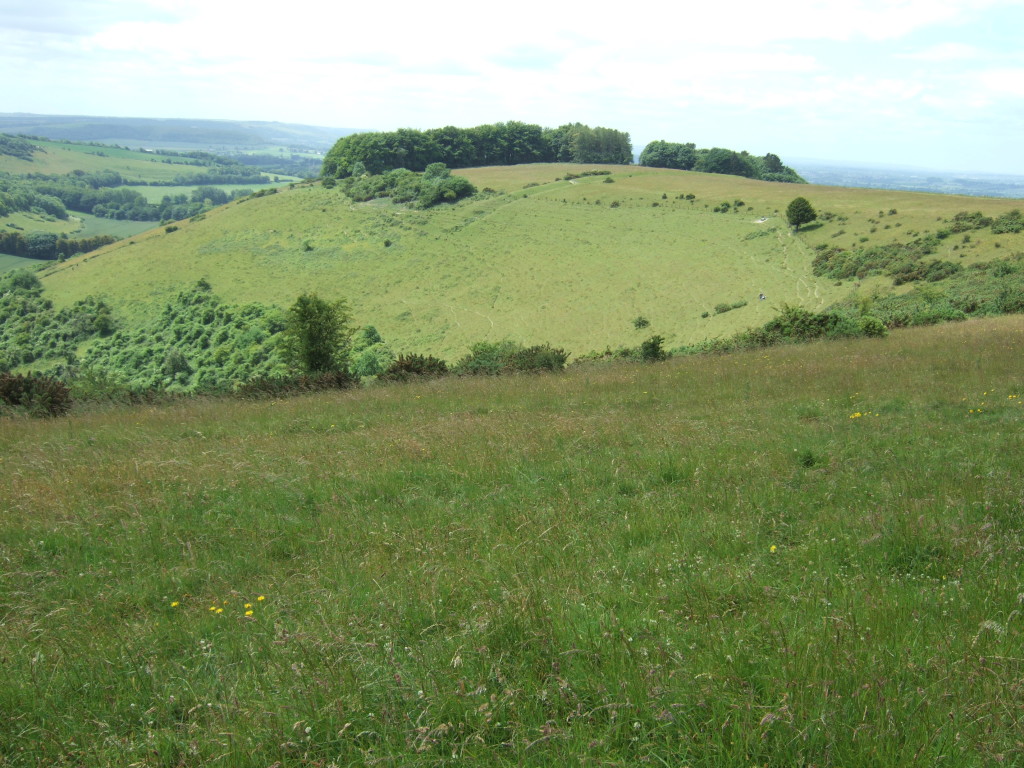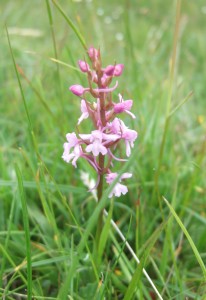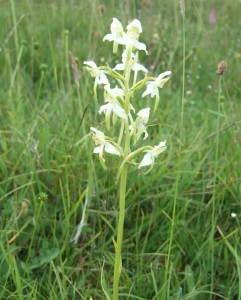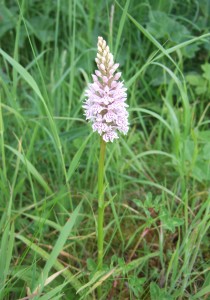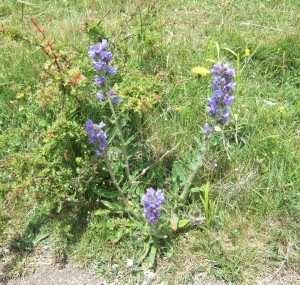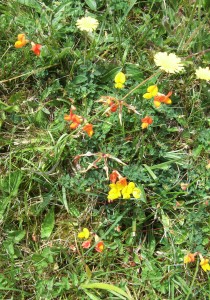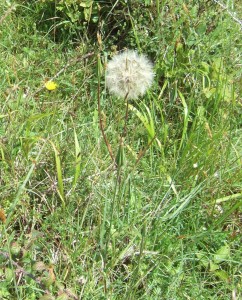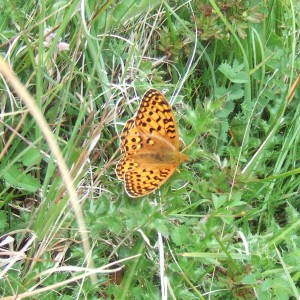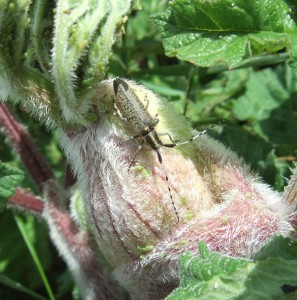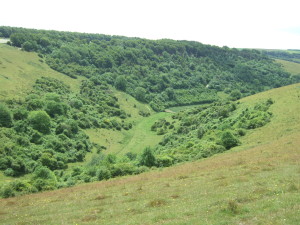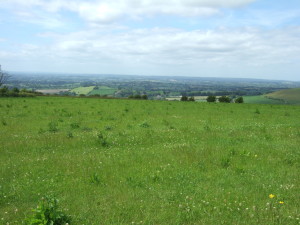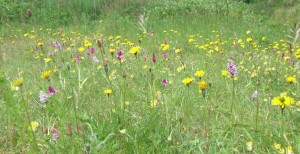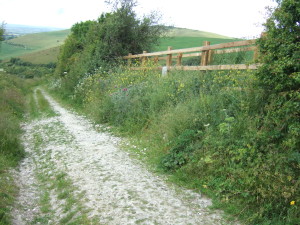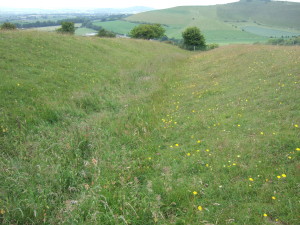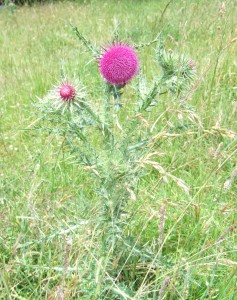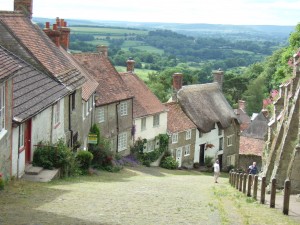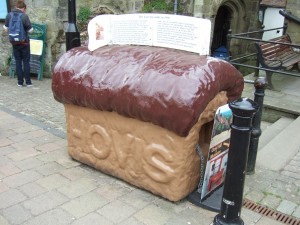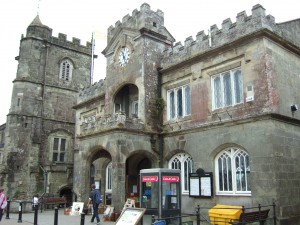Bulbarrow Hill is a beautiful hill in north-central Dorset, south of Sturminster Newton and west of Blandford Forum. Here the chalk hills rise to 274 metres, making it the third-highest point in the county (after Eggardon Hill at 279 m and Pilsdon Pen at 277 m). It has spectacular views all around, especially to the north and north-west, over the Blackmore Vale, and south-eastwards towards the Dorsetshire Gap. This is in the heart of Thomas Hardy country, and is as lovely as it was in his day, seemingly little-changed. Click on all photos to enlarge: if you then click on the photo again, you get an even bigger version.
By the stile to the footpath leading to Rawlsbury Camp was this sign:
Rawlsbury Camp is a small multivallate hillfort, dating from the Iron Age. It is a Scheduled Ancient Monument, and according to its listing, does not appear to have been excavated. A large, fairly new wooden cross has been placed within the hillfort. I can see no mention of this in the listing and wonder if it is a modern construction or replacing an older, historic one. I would hope the latter, as I cannot see how such despoilation of a scheduled ancient monument would be allowed otherwise.
The Dorsetshire Gap is a prominent landscape feature, a very obvious gap (and thus passageway) between Nordon Hill to the east and Nettlecombe Tout to the west. Five ancient trackways meet at the Gap.
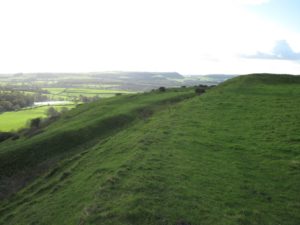
The earthworks (ramparts and ditches) of Rawlsbury Camp. It must have been a bleak life living up here. The Dorsetshire Gap is on the horizon.
One of the things that struck us here is that even though there is a road running right across the top of the hill, there is no road noise, allowing you to enjoy the proper sounds of the countryside. This is in marked contrast to another favourite Dorset spot of ours, Fontmell Down Nature Reserve, where the A350 runs noisily close by and the neighbouring Compton Abbas airfield sees plenty of small aircraft coming and going.
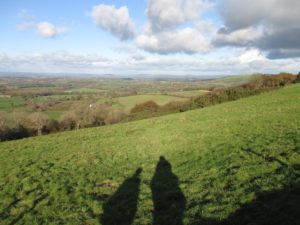
Looking north across the Blackmore Vale towards the Shaftesbury escarpment and the lone tump of Duncliffe Hill. You can just make out the clump of trees on Win Green on the very right of the photo, on the skyline. (Click to embiggen/bigify).
On the way home we stopped at the River Stour, just north of the wonderfully named village of Hammoon. Here there is a small brick-built river water monitoring station, run by the Environment Agency, and there is a very touching plaque mounted on the wall.
